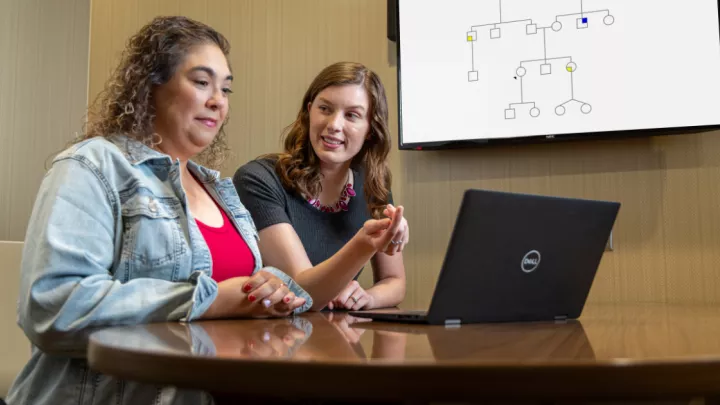DCD lungs give lung transplant patients shorter wait times

When you’re waiting for a lung transplant, time matters. To receive a lung donation quickly can mean the difference between life and death. The Nebraska Medicine Lung Transplant Program gives better outcomes for lung transplant patients:
- 1.5 months to transplant (national wait time is 4 months)
- 2 to 3% mortality on wait list (national mortality is 10 to 20%)
- 0% mortality 30 days after transplant (typical is 5%)
Donation after circulatory death (DCD) lungs are overlooked by other programs, but they’re one of the reasons for our shorter wait times. DCD lungs are a different type of lung donation than the typical DBD lungs. Read on to see why DCD lungs give more options to people who need new lungs.
What are DCD lungs?
DCD stands for donation after circulatory death. After someone suffers a severe, irreversible illness, their family and medical team sometimes choose to let the individual expire by stopping medical treatments keeping them alive. Without the help of medical devices, their heart stops beating. “Circulatory death” means blood no longer circulates (travels) to the rest of the body. If the individual or their family previously expressed a wish to donate organs, our program evaluates the organs to see if any can be used for transplant. If the lungs work for transplant, the individual becomes a DCD or donor after circulatory death.
DCD lungs give more options
Up to 20% of patients waiting for a lung transplant in the United States never get one. These people deteriorate or die while on the transplant list. By increasing the number of available lungs, these patients have a better chance to get a life-saving organ.
Including DCD lungs gives more lung options without sacrificing the organ quality. It expands the pool of potential donors. Currently DCD lungs are under-utilized in the United States. By considering DCD lungs (along with the more common donation after brain death or DBD lungs) for transplants, Nebraska Medicine increases the number of lungs available for our patients.
Are there downsides to DCD lungs?
The only other type of lung donation are DBD lungs: donation after brain death. Recipients of DCD and DBD lungs do equally well. Recent data says DCD lungs may have a slight long-term advantage at 10 years, but research is still ongoing.
DCD lungs are more unpredictable than DBD. The time of death for the DCD donor is harder to predict, which affects the team’s ability to transplant effectively. This unpredictability means that it is more likely with DCD for recipients to receive offers for transplant that do not result in an actual transplant – a “dry run.”
Ensuring DCD lung quality
The process of lung transplants usually looks like this:
- Our team goes to the hospital where the potential donor is located, which can be many hours away.
- A potential recipient is admitted to Nebraska Medical Center to prepare for the possible transplant surgery.
- The team evaluates the lungs. If the lungs are in good condition, they transport the lungs to Nebraska Medical Center.
- We give the patient new lungs.
Sometimes the lungs aren’t in good condition, yet the potential recipient is prepped for surgery. The cancelled transplant is called a “dry run.” Since the time of death in DCD is unpredictable, the odds of a “dry run” are higher. That’s why some programs don’t use DCD lungs at all.
However, once transplanted, lungs from DCD perform as well as lungs from DBD.
The other type of lungs – donation after brain death, or DBD – is more predictable because the type of injury leads to more sudden deaths after medical devices are removed. We accept both DCD lungs and DBD lungs in our Lung Transplant Program, as long as they meet our high standards for lung quality.
Choose the Nebraska Medicine Lung Transplant Program
Our program has a shorter wait list time and lower wait list mortality than the national average. We consider DCD donors – plus other donors that some programs overlook – which means more lungs for more patients. We also use new technologies such as the organ care system (OCS), which transports lungs over long distances.
Our location, expertise and wait list volume also contribute to our exceptional outcomes. Our program has personnel with experience and expertise in aspects of donation that are not commonly found in the United States. Our Pulmonology and Lung Surgery Program was nationally ranked as “high performing” in 2020 by U.S. News.
See what to expect during a lung transplant evaluation, or find out more about our Lung Transplant Program.




